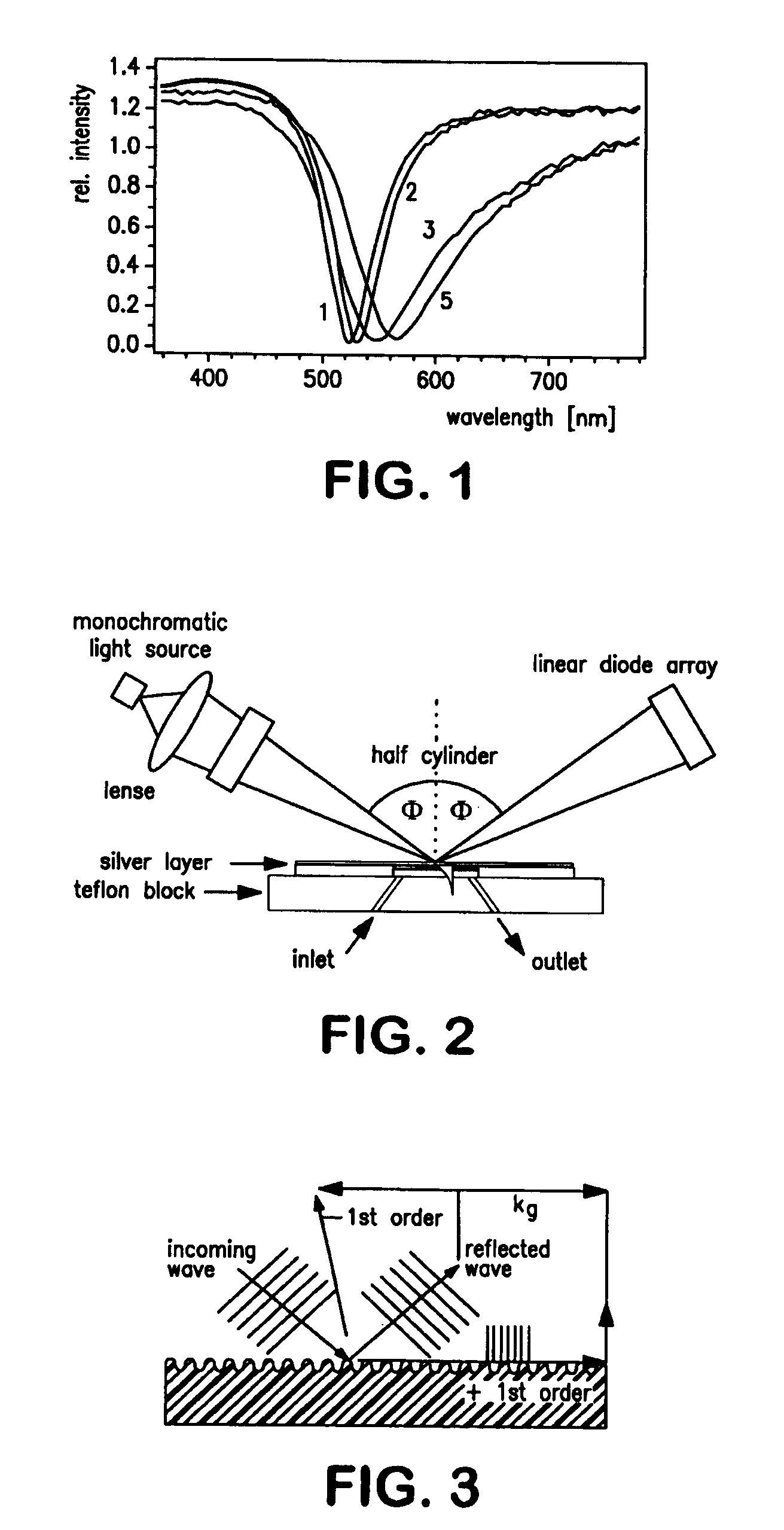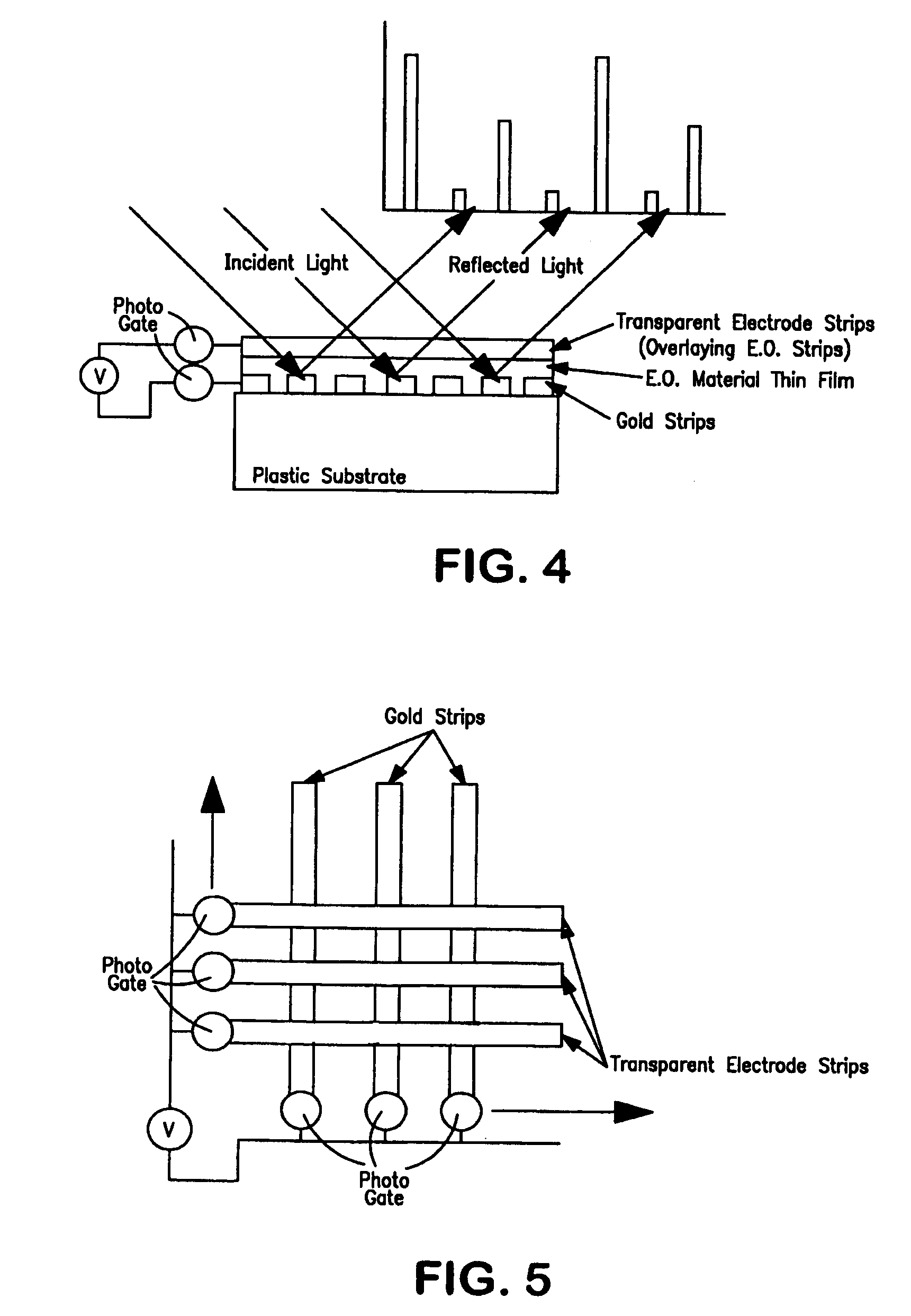Electro-optic array interface
a technology of array interface and array array, applied in the direction of static indicating device, material analysis by optical means, instruments, etc., can solve the problems of ghz range performance that cannot be fully exploited, constraint that will become increasingly severe, and the challenge of routing signals off-chip and into the system in the ghz frequency range is expected to exceed the performance of on-chip performance, and achieve high interconnect density
- Summary
- Abstract
- Description
- Claims
- Application Information
AI Technical Summary
Benefits of technology
Problems solved by technology
Method used
Image
Examples
Embodiment Construction
1.2.1 Surface Plasmon Resonance
[0029]At the heart of the SPROM is the high-density, dynamically reconfigurable reflector microarray. Since its function is based on grating-coupled SPR, understanding its operation and fabrication require some knowledge of the physics of SPR, which we briefly review in this section.
[0030]The theory of surface plasmon resonance is well established. When a metal surface is illuminated by TM-polarized light of the appropriate wavelength and angle of incidence, a resonance condition occurs and energy from the light is coupled into the electrons of the metal to excite what is called a surface plasmon. A surface plasmon is a propagating electron oscillation in a metal at a metal / dielectric interface. The associated electromagnetic fields constitute a guided surface mode of the conductor-dielectric interface and are evanescent in each medium with intensity decaying exponentially away from the surface. Penetration into the dielectric depends on the wavelength...
PUM
| Property | Measurement | Unit |
|---|---|---|
| width | aaaaa | aaaaa |
| on-chip clock frequencies | aaaaa | aaaaa |
| on-chip clock frequencies | aaaaa | aaaaa |
Abstract
Description
Claims
Application Information
 Login to View More
Login to View More - R&D
- Intellectual Property
- Life Sciences
- Materials
- Tech Scout
- Unparalleled Data Quality
- Higher Quality Content
- 60% Fewer Hallucinations
Browse by: Latest US Patents, China's latest patents, Technical Efficacy Thesaurus, Application Domain, Technology Topic, Popular Technical Reports.
© 2025 PatSnap. All rights reserved.Legal|Privacy policy|Modern Slavery Act Transparency Statement|Sitemap|About US| Contact US: help@patsnap.com



